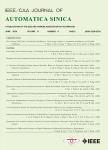Sparse Reconstructive Evidential Clustering for Multi-View Data
作者机构:School of ComputingNational University of SingaporeSingapore
出 版 物:《IEEE/CAA Journal of Automatica Sinica》 (自动化学报(英文版))
年 卷 期:2024年第11卷第2期
页 面:459-473页
核心收录:
学科分类:12[管理学] 1201[管理学-管理科学与工程(可授管理学、工学学位)] 0811[工学-控制科学与工程]
基 金:supported in part by NUS startup grant the National Natural Science Foundation of China (52076037)
主 题:Evidence theory multi-view clustering(MVC) optimization sparse reconstruction
摘 要:Although many multi-view clustering(MVC) algorithms with acceptable performances have been presented, to the best of our knowledge, nearly all of them need to be fed with the correct number of clusters. In addition, these existing algorithms create only the hard and fuzzy partitions for multi-view objects,which are often located in highly-overlapping areas of multi-view feature space. The adoption of hard and fuzzy partition ignores the ambiguity and uncertainty in the assignment of objects, likely leading to performance degradation. To address these issues, we propose a novel sparse reconstructive multi-view evidential clustering algorithm(SRMVEC). Based on a sparse reconstructive procedure, SRMVEC learns a shared affinity matrix across views, and maps multi-view objects to a 2-dimensional humanreadable chart by calculating 2 newly defined mathematical metrics for each object. From this chart, users can detect the number of clusters and select several objects existing in the dataset as cluster centers. Then, SRMVEC derives a credal partition under the framework of evidence theory, improving the fault tolerance of clustering. Ablation studies show the benefits of adopting the sparse reconstructive procedure and evidence theory. Besides,SRMVEC delivers effectiveness on benchmark datasets by outperforming some state-of-the-art methods.



